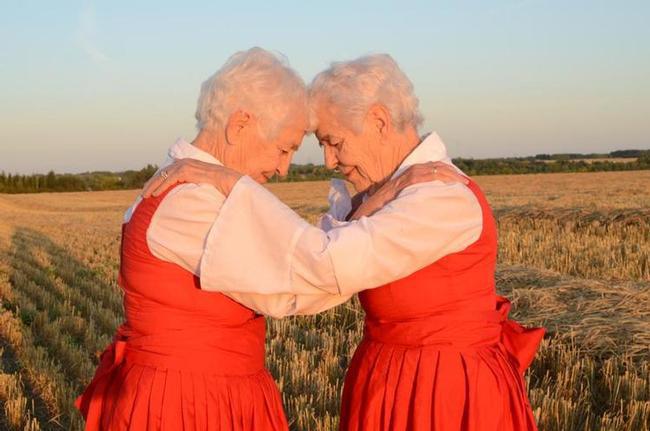Neither be cynical about love; for in the face of all aridity and disenchantment it is as perennial as the grass.
—Desiderata, Max Ehrmann, 1927
The Elora Centre for the Arts’s latest exhibition, “As Perennial as the Grass,” takes its title from the 1927 prose poem Desiderata by American writer Max Ehrmann. Latin for “desired things,” the poem reads as a thoughtful meditation on full and purposeful living. Widely reproduced on aspirational posters and famously appropriated by former prime minister Trudeau as part of a 1972 speech (after winning a minority government, he said that “no doubt the universe is unfolding as it should”), the text is familiar to many.
Though the exhibition’s textual reference may be well known, for me it feels far from generic; it hits closer to home. This spring, I travelled to the East Kootenays in British Columbia to say goodbye to my grandparents’ former home. As a memento, I took a well-worn, dog-eared copy of Desiderata, published in 1972 and featuring simple blue line drawings by Emil Antonucci.
Interestingly, sentimentality and aspects of close human relationships—familial and otherwise—are central to this exhibition’s premise. “As Perennial as the Grass” is a modest but poignant exploration of the affective potential of human contact (as either observer or participant), and it attempts to rebuke the easy creep of cynicism in contemporary artmaking.
Visible upon entering the gallery, Amalie Atkins’s Embrace (2011) beguiles visitors and draws them closer. Onscreen, two elderly Canadian-Austrian twins repeatedly hug one another against an endless prairie scene. Each take begins with some hesitation, with the women inching towards each other—mindful of the camera and their relation to it—before settling at a comfortable distance with arms outstretched, palm to shoulder, heads bowed and touching. Stillness overtakes the pair as they gently sway, calm smiles spreading across their lips, before the moment is broken by a cutaway and the exercise begins again. Atkins’s skillful execution resists the saccharine, repeatedly pulling the viewer into the immediacy of the here and now by rupturing our viewing precisely at the moment when we settle into a languid pause. The strategy is truthful, the effect striking; instead of drowning in sentimentality, this work (for me) provoked extended considerations of kin, aging and the witnessing of lives lived.
Framing Atkins’s film are four large-scale knit paintings by Kathryn Ruppert-Dazai. Three are from the Love Letter Series (2008–12), based on fragments of love notes left for the artist by her husband. The other is Twin White, I love you, La Crainte de la morte et d’autres crainte (2005), which references the twin feelings of anxiety and excitement that might be present the first time one is naked in front of a loved one. At six feet square, with vibrant colour, ample texture and charming prose, the love-letter works solicit particular attention. Each piece is composed of a variety of textiles including sequins, cotton, wool, acrylic and cashmere, and each functions akin to a peephole, inviting viewers into intimate exchanges, secret jokes and tender sentiments. The variety of Ruppert-Dazai’s material palette and techniques conjure the immediacy of a maker who produces with whatever is at hand, revealing the process of her working methods atop her knit grounds, which are created with the help of a toy knitting machine from Japan.
The show is rounded out by two community-propelled projects: The first is Brian Cauley’s Neighbourhood Messages (2012), a new edition of a project that was initially included in Labspace Studio‘s contribution to the Art of the Danforth Festival in 2012. The second is Ellyn Walker’s #7: Love a garden with all your heart (2013).
Cauley invited Elora residents to leave inspirational notes for strangers. In the two months prior to the exhibition, typewritten messages were strung in tree branches, and visitors were invited to read, respond or remove notes left behind by others. In the gallery, a selection of these messages are displayed on string and hung from the ceiling. #7: Love a garden is connected to Walker’s Ideas for a Future Time, a list of propositions for living including “#3: Cut your hair and grow it back” and “#8: Ride your bike through lonely places, keep going.” Walker’s piece in the exhibition asks gallery-goers to water and tend to a garden planted by the artist. Records of watering times and names of participants are written on a large sheet of paper on the adjacent wall.
Although the works by Cauley and Walker are deserving of recognition for their capacity to invite collaboration and public participation, I felt that both left something to be desired. Where the intimate actions of Atkins and Ruppert-Dazai tempt the viewer as invited voyeur, Cauley’s collection reads, overall, as generalized and impersonal, in part due to the mediation of typewritten words as opposed to handwritten notes. And while Walker’s #7: Love a garden conjures the complexities of care, caring for others and remembering to continually make that care known through action, the garden itself appears overly pristine and feels slightly out of context inside the gallery. Ultimately, for me, both works lack the messy, intimate and contradictory potential I’ve come to relish in community-based projects, something that was discussed at length in Canadian Art’s own recent symposium The Ecology of an Art Scene.
“As Perennial as the Grass” is the first annual exhibition of the Middlebrook Prize for Young Canadian Curators, making its curator Katherine Dennis the inaugural prize recipient. Overall, I found it to be a successful project—despite feeling that it might have benefited from one or two more critical works to keep it from wandering into overly sentimental territory.
That said, the proposition put forth by Dennis—namely that “simple gestures…are poetic affirmations for ways of interacting in and connecting with the world”—is not lost on me. In a field often saturated with skepticism, it is a welcome, if fleeting, reminder of art’s potential to provoke authentic responses.









